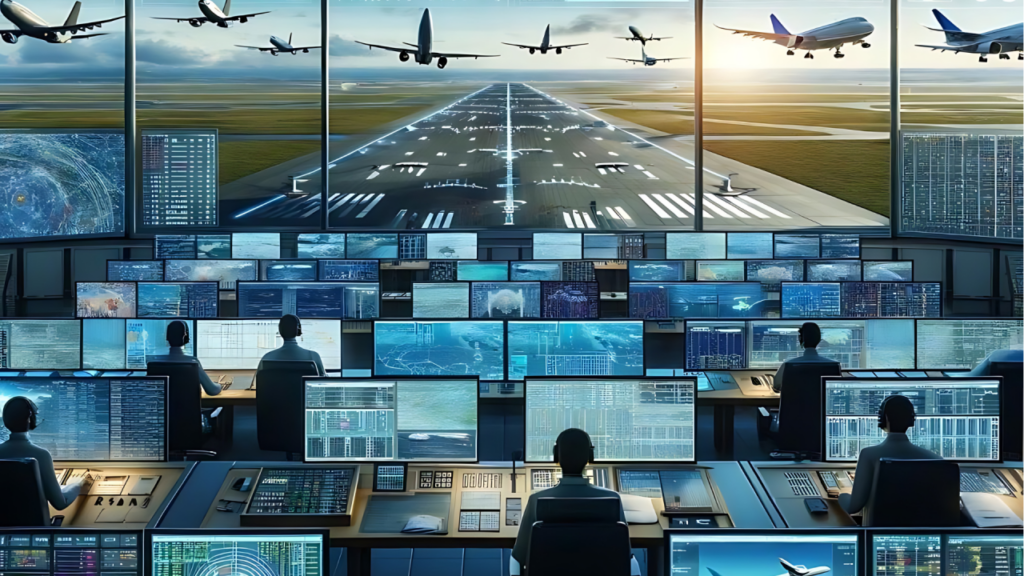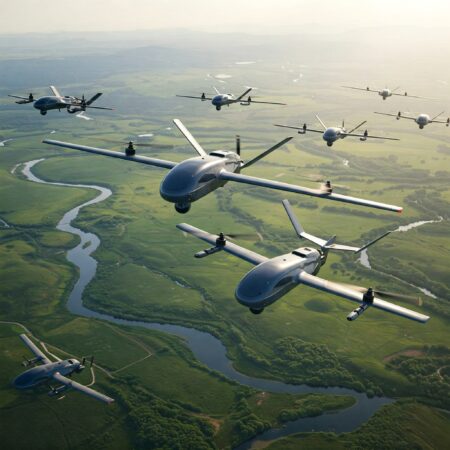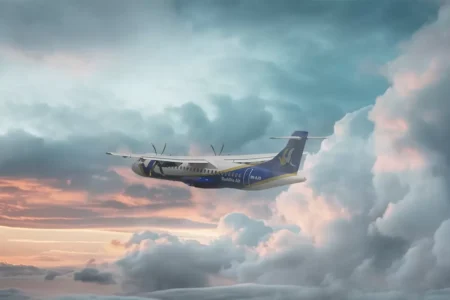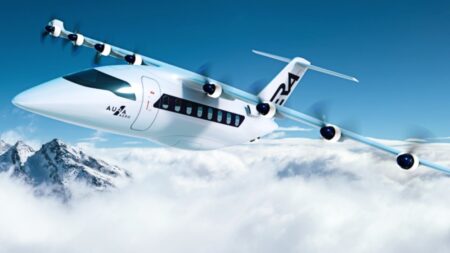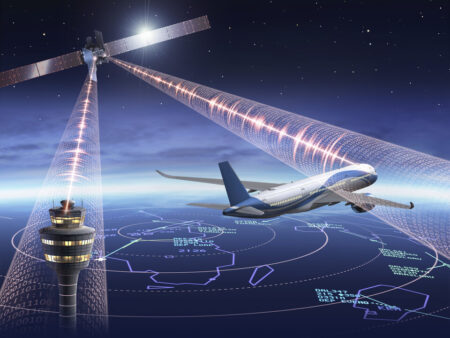The aviation industry has always been at the forefront of adopting new technologies to improve safety, efficiency, and passenger experience. One of the most crucial aspects of this is air traffic control (ATC), the system that ensures aircraft are safely and efficiently routed through national and international airspace. As the demand for air travel continues to grow, so too does the need for more advanced, scalable, and reliable ATC systems. In response, several emerging technologies are poised to revolutionize air traffic control, bringing new levels of safety, efficiency, and environmental sustainability to the skies. This article explores the future of air traffic control and the key innovations shaping its evolution.
1. Automation and Artificial Intelligence (AI) in Air Traffic Control
The integration of artificial intelligence (AI) and machine learning (ML) into air traffic management systems promises to significantly enhance the capability of air traffic controllers. By using AI algorithms to analyze vast amounts of data in real-time, ATC systems can predict potential risks, optimize flight paths, and improve decision-making.
AI-Driven Decision Support Systems
AI can assist air traffic controllers by providing advanced decision support systems that help in managing congested airspace, especially during high-traffic times. These systems can analyze weather patterns, flight trajectories, and air traffic flow to recommend optimal routes, adjust altitudes, or even change the timing of aircraft departures and arrivals. This reduces the cognitive load on controllers and helps mitigate human error.
Automation of Routine Tasks
Routine tasks such as radar monitoring, traffic separation, and flight sequencing can be automated to a certain degree, allowing controllers to focus on more complex or unforeseen scenarios. Automated systems can assist with managing aircraft separation in low-traffic situations and provide real-time alerts when conditions change, enhancing safety and efficiency.
AI for Predictive Maintenance
In addition to supporting day-to-day operations, AI can also be used for predictive maintenance of air traffic control systems and equipment. By continuously monitoring system health, AI can predict hardware failures before they occur, minimizing downtime and ensuring that air traffic control systems remain operational at all times.
2. NextGen and SESAR: Advanced Air Traffic Management Systems
The Next Generation Air Transportation System (NextGen) in the U.S. and the Single European Sky ATM Research (SESAR) in Europe are two significant initiatives aimed at modernizing air traffic management (ATM) to handle growing air traffic while improving safety and reducing environmental impact.
Performance-Based Navigation (PBN)
One of the key elements of NextGen and SESAR is the widespread adoption of Performance-Based Navigation (PBN), which relies on satellite-based navigation rather than traditional ground-based radar. This allows for more direct flight routes, reducing flight time, fuel consumption, and overall emissions. PBN also improves safety by providing more accurate navigation, especially in areas where radar coverage is limited.
Data Communication (DataComm)
NextGen and SESAR are also introducing data communication systems that will replace voice-based communication between aircraft and air traffic controllers. This shift will reduce communication errors and improve the efficiency of air traffic management. Pilots and controllers will be able to send and receive clear, concise digital messages, streamlining operations and improving safety.
Collaborative Decision-Making (CDM)
The concept of Collaborative Decision-Making (CDM) is central to NextGen and SESAR, allowing for more efficient coordination between airlines, air traffic controllers, airports, and other stakeholders. By sharing real-time information on weather, traffic, and delays, all parties can make better-informed decisions, reducing congestion and improving overall system performance.
3. Unmanned Aircraft Systems (UAS) Integration
As unmanned aerial systems (UAS), also known as drones, become more widespread, their integration into traditional air traffic management systems presents both challenges and opportunities. The ability to safely integrate UAS into the national airspace system (NAS) is crucial to maintaining safety standards as drone traffic grows.
UAS Traffic Management (UTM)
To address the unique challenges of integrating drones into controlled airspace, the Federal Aviation Administration (FAA) and other regulatory bodies are developing UAS Traffic Management (UTM) systems. These systems use technologies like AI, machine learning, and real-time data sharing to monitor and manage drone operations, ensuring that drones do not interfere with manned aircraft or cause safety hazards.
Remote Identification and Tracking
To improve safety and compliance, remote identification (Remote ID) technologies will play a pivotal role in the future of UAS management. Remote ID allows air traffic controllers and other aircraft operators to track the location and operation of drones in real time, enhancing situational awareness and mitigating potential risks.
Autonomous Drone Operations
Some companies are working on developing fully autonomous drones that can operate without human intervention. For these systems to be safely integrated into airspace alongside traditional aircraft, air traffic control systems will need to evolve to accommodate autonomous flight paths, detect and avoid systems, and dynamic rerouting protocols.
4. 5G and IoT for Air Traffic Control
The rollout of 5G networks and the Internet of Things (IoT) will further transform air traffic control by enabling faster, more reliable communication between aircraft, controllers, and ground systems. The combination of 5G’s high-speed data transmission and IoT’s real-time sensor networks will create a connected ecosystem that improves safety, operational efficiency, and situational awareness.
Enhanced Communication and Data Exchange
5G networks can facilitate real-time data exchange between air traffic control centers, aircraft, airports, and other stakeholders. This includes sharing information on weather conditions, flight paths, and other operational factors that could impact air traffic management. The low-latency nature of 5G ensures that controllers have access to the most up-to-date information, enabling quicker decision-making.
Smart Airports and Aircraft
IoT sensors installed in airports and aircraft will allow for better monitoring of operational conditions, such as runway congestion, aircraft health, and even environmental factors like air quality and weather. These sensors will provide a continuous stream of data, which can be analyzed by AI and machine learning algorithms to optimize air traffic flow and prevent bottlenecks.
Real-Time Tracking and Monitoring
The use of 5G and IoT will improve the ability to track and monitor aircraft in real time. This is particularly important in managing congested airspace and ensuring safe distances between aircraft. The combination of real-time data, advanced analytics, and high-speed communication will provide air traffic controllers with a clearer picture of air traffic and potential risks.
5. Space-Based Surveillance Systems
Traditionally, air traffic control has relied heavily on radar systems that provide ground-based surveillance of aircraft. However, space-based surveillance is an emerging technology that promises to revolutionize global air traffic monitoring.
Global Coverage
Space-based surveillance systems, such as the European Space Agency’s IRIS program and the FAA’s space-based ADS-B (Automatic Dependent Surveillance-Broadcast), are designed to provide continuous, global coverage of aircraft, even in remote areas where traditional radar systems do not reach. This will improve safety by ensuring that aircraft in areas like the ocean or the polar regions are still being monitored in real time.
Improved Safety and Efficiency
By providing more accurate and reliable tracking, space-based surveillance systems will reduce the chances of lost communication or surveillance gaps, which can lead to dangerous situations. Additionally, the global coverage of these systems allows for more efficient flight routing, especially on international long-haul flights.
A Safer, More Efficient Future
The future of air traffic control lies in the integration of advanced technologies like artificial intelligence, automation, satellite navigation, and 5G communication. These innovations promise to make air traffic control more efficient, safer, and sustainable. By adopting these technologies, aviation will be better equipped to handle the growing demands of air traffic, ensuring that the skies remain safe for all passengers and operators. As the global airspace becomes more complex, the role of emerging technologies will be critical in maintaining safety and efficiency, setting the stage for the next generation of aviation.







